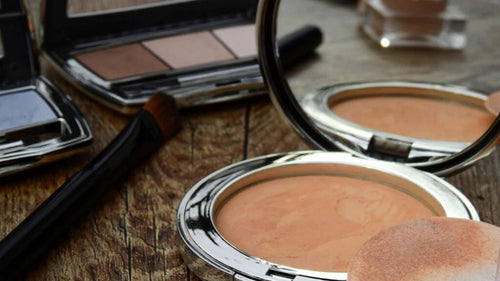PRENUMERERA & SPARA 20%
FRI FRAKT
Kommer du ihåg ditt lösenord?
Subscribe to receive a guaranteed shipment of formula every month.
Enjoy a {{ discount_amount }} discount on product throughout your subscription.
Change or cancel your subscription at any time!


PFAS är en stor grupp av högfluorerade, syntetiskt framställda ämnen som är mycket svårnedbrytbara och därmed långlivade i miljön. Ibland kallas därför PFAS för evighetskemikalier och dessa finns i en rad produkter och har blivit föremål för en intensiv debatt i Sverige. Bland annat efter att ha kontaminerat dricksvatten via brandskyddsskum i Blekinge, men även efter nyligen upptäckta föroreningar i fiskevattnen i Boden. Och nu senast i granskningen av kosmetikabraschen som Aftonbladet lyft.
PFAS används främst för dess vattenavvisande egenskaper, i produkter som brandskyddsskum, vattenavisande kläder och stekpannor. PFAS används tyvärr också i kosmetiska produkter för att få dem att sitta kvar längre och förbättra deras vattenresistens. De kan återfinnas i såväl vattenfast mascara och foundation men även i en rad andra produkter som ansiktskrämer, ansiktsmasker, eyeliners, hårolja, raklödder, puder, serum och ögonskuggor. Men fördelarna kommer med en dold kostnad.
PFAS kan störa kroppens hormonsystem, vilket kan leda till olika hälsoproblem. Exponering för PFAS har visat sig kunna påverka sköldkörtelfunktionen, vår fortplantning och öka risken för vissa cancerformer. Dessa effekter kan uppstå även vid låga exponeringsnivåer, vilket är vanligt vid daglig användning av kosmetika.




PFAS miljöpåverkan är lika allvarlig. Dessa evighetskemikalier bryts inte ned naturligt och ackumuleras därför i vatten, jord och levande organismer. Denna ackumulering kan ha omfattande effekter på ekosystemen och påverka människors hälsa genom förorenat vatten och livsmedel under mycket lång tid. I december 2023 dömdes slutligen det kommunala vattenbolaget i Ronneby, efter en lång rättsprocess, av Högsta Domstolen att betala skadestånd till drabbade som fått i sig PFAS via dricksvattnet i kommunen. En relevant fråga är vilket ansvar de företag som idag och tidigare använt PFAS i sina produkter har, trots vetskapen om att dessa ämnen är hälsofarliga?
Redan under 1960-talet visade djurstudier utförda av 3M och DuPont att PFAS-kemikalier medförde hälsorisker. I mitten av 1970-talet visste 3M att PFAS ansamlades i amerikaners blod. Under 1980-talet kopplade både 3M och DuPont PFAS till cancer och fann förhöjda cancernivåer bland sina egna arbetare.
Nu har det europeiska industriorganet Cosmetics Europe (CE), och även svenska KoHF (Kosmetik- och Hygienföretagens branschorganisation), rekommenderat att tillverkare av kosmetiska produkter senast från och med 31 december 2025 ska fasa ut och inte marknadsföra kosmetiska produkter som innehåller avsiktligt tillsatt PFAS (1).Men de finns alltså fortfarande kvar i många produkter. I den granskning som Aftonbladet gjorde i november 2023 så skriver man att flest produkter med PFAS i innehållsförteckningen hittades av forskarna i produkter från franska L’Oréal-gruppen. I ett mejlsvar till tidningen så uppger de att de slutat använda PFAS 2020, men trots detta finns väldigt många produkter kvar till försäljning där PFAS-ämnen finns listade bland ingredienserna. Företaget uppger också att det är svårt att säga hur länge dessa produkter kommer finnas kvar på marknaden till försäljning. Detta är ytterligare en aspekt och baksida med den traditionella hudvårdsbranschen som vi vill lyfta där stora volymer kan produceras då hållbarheten på produkterna ofta är flera år.
Läs artikeln i Aftonbladet här.
Hur kan ämnen som redan på 60-talet sågs orsaka negativa hälsoeffekter hos människor fortfarande vara lagliga att använda? Detta är frågor som vi brottas med. Vi har även kunder som hör av sig och frågar om vi har PFAS i våra produkter. Nej, är det enkla svaret, vi skulle aldrig använda dessa ämnen i våra formuleringar. Den stora frågan är, hur kan man idag med den kunskap vi har, vänta till slutet på 2025 med att reglera PFAS-användningen och fortsatt använda det i sina produkter?
Detta känns inte bara föråldrat, utan direkt ansvarslöst.
Vad tycker ni?